In India, endless memes and WhatsApp jokes circulate stating Goa as the ultimate party destination for generation millennials and how travel plans always evolve around the famous Goan beaches and nightclubs. From the onset of fall to the end of winter, Goan beaches are packed with holidaymakers, taking havoc toll on the pristine coastal line by the Arabian sea. Goa flaunts of a nightlife unlike the rest of India in countless social media updates. Well, do not let those myriad attempts prevent you from hearing the real pulsating heartbeat from the tiny coastal state. True, Goa is unlike any other state of India. However, her identity is formed by culture and heritage that date back to the age of Mahabharata! Here is an anecdote to the real Goa that seldom shows her real self to the travellers, but when she does, she enthrals!
History
In the Mahabharata, the epic tale from Indian mythology, we find multiple references to Gomantak, which is believed to be the modern-day Goa. Myths of Parashurama and his axe tell the sea receded to save itself from his wrath, resulting in the rise of Konkan land by the banks of River Mandovi and River Zuari. Until date, Arvalem caves (also called the cave of Pandavas, used during their exile) bear witness to this ancient story. The major imperial dynasties of India ruled this land, starting from the Mauryas until the Portuguese traders took the crown. The Goa we experience today is a direct result of assimilation of various cultures and heritage.
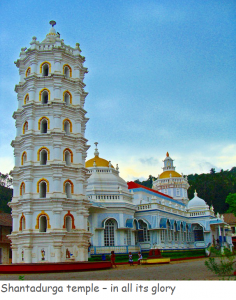

Temples and churches
As the dynasties of different faiths reigned Goa, they adorned her with distinctive heritage that married seamlessly with its predecessor’s. The lesser-known temples as well as the Dutch-built churches with intricate details stand witness to the days of yore and evokes awe in every visitor’s mind. During Mahashivratri, pay a visit to the brilliant Shiva temple Tambdi Surla. Set amidst a stunning natural backdrop, this awe-inspiring temple is declared a heritage monument. The Shree Shantadurga temple represents the epitome of peace and harmony, where believers from both Hindu and Christian families come to pay homage. It is found at three places, namely Kavlem, Pemem, and Quepem. To witness a gorgeous lighting offered in the heart of North Goa, do not forget to visit Shri Manguesh Temple, an embodiment of traditional architecture in modern built.
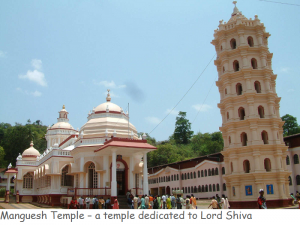

During the colonial period, Goa had developed a unique style of architecture, influenced by the architecture in Europe. The picturesque Se Cathedral, Basilica of Bom Jesus, Reis Magos Fort, Church St. Francis of Assisi, Church of Lady of Immaculate Conception tell volumes of the Goan history.
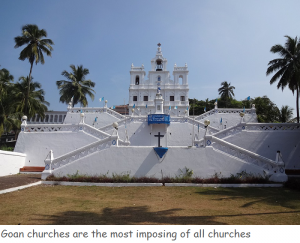

Food
When in Goa, be prepared to experience a burst of coconut-flavoured curries. The popular sea beaches in Goa are dotted with plenty of shacks, offering you fresh catch of the day. One typical Goan characteristic of serving seafood is that they first show you the fish; you get to choose the one you want, customise the ingredients and wait till it arrives, watching over a spectacular sunset show. In case you want to try the local moonshine, opt for cashew fenny. A statutory warning may be heard that only the reputed shops should be trusted when it comes to procuring fenny. To end the meal, try some bebinka, a traditional Indo-Portuguese pudding made with plain flour, sugar, ghee, egg yolk, and coconut milk. The Malvani thali served in authentic Goan restaurant often comes with a choice of vegetarian only platters. You may customise it further if vegan is your calling!
In search of untouched beaches in Goa
In search of pristine beaches beyond the tourist trap, we suggest you head for southern Goa. Rent a bike for your stay. It comes without creating a dent on your pocket. There are ruins of old forts on the coastal line. One such fort is Corjuem, where solitude fills up the empty air. Once you reach Palolem beach, a favourite of the tourists, do not stop. Take a ferry and head for the beach cove named Butterfly Beach. Lined with coconut grooves, Cola beach awaits you with wonder as well. Speak with the resorts in case you are keen on tent accommodation by the beach. If you want to experience bliss through yoga, head to the north of the state, stay in Assagao and be a part of the yogi community that practices by the azure beach in early morning sessions.
Meet the crocodiles
Locally-known as Muggers, in the village of Cumbarjua, you will find the crocodiles hidden in mangroves, sunbathing! Even though they are essentially freshwater crocs, they have adapted themselves to survive in saline water as well. The canal is 15 km long and banked by dense forest with exotic birds.
Trekking in the unknown hills
From the Bhagwan Mahavir sanctuary, an early morning trek for a couple of hours will take you to the Devil’s canyon, the river gorge! Local folklore suggests a local fisherman outwitted the reigning devil and fishes in the water. The mighty devil, angered, cursed the place. It is believed to be the reason most people who try to swim in the water drown in the fast-moving currents! If you do have time on hand and are smitten by Bollywood’s magnum opus Chennai Express, you should consider visiting the Dudhsagar waterfalls. One of India’s quintessential (and best!) falls, Dudhsagar waterfalls are viewed from the Konkan railway track, making it one of the most scenic railway journeys in the country! To witness the falls in all their might, consider visiting in the monsoons, though a hike up the hill may not be allowed at that time.
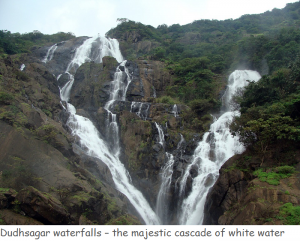

For the discerning customers, we have depicted a real Goa that smiles, cries, makes merry, thrives by the Arabian sea, and goes beyond the reduced identity of the Indian party hotspot! If you plan a Goa trip now, you know where to sunbathe or where to find an ancient temple to worship at! Do not forget to taste the best of the Goan cuisine, which offers a whiff of the fragrance of coconut and produce of the sea!


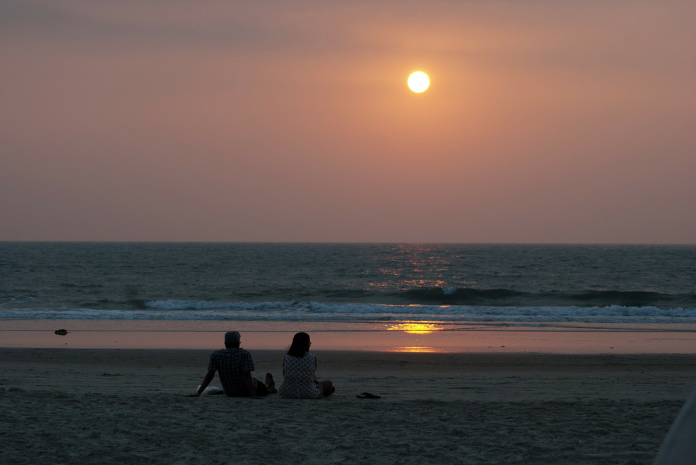

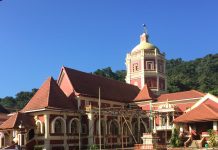















Each visit to Goa leaves a lot more to explore!